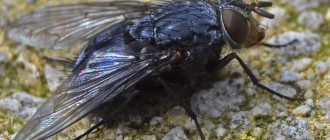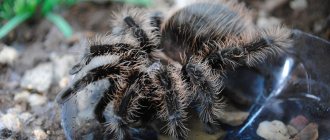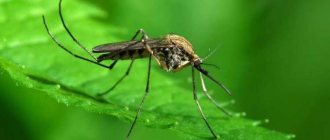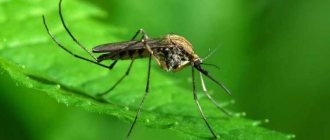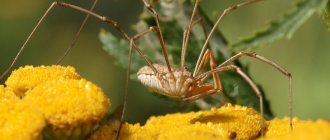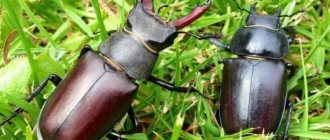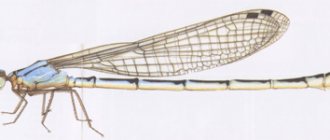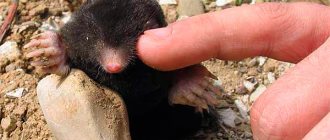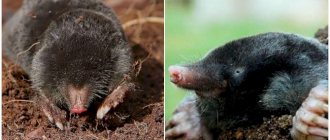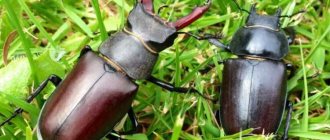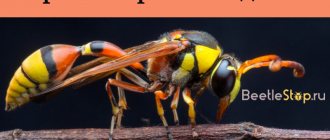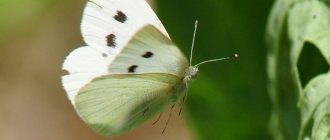Growing fruits and vegetables comes with many risks. Bad weather, defective seeds, diseases and pests - all this can ruin a farmer's efforts. When growing cruciferous crops in the garden, the cabbage butterfly poses a particular danger, whose caterpillars can destroy the entire crop in a short time. What cabbage whites are and how to deal with it, we’ll look at it below.
- Classification and habitat
- What does a caterpillar eat?
- Characteristics and body structure Head
- Oral apparatus
- Chest and abdomen
- Wings
- Limbs
- Body coverings and their appendages
Classification and habitat
The cabbage white butterfly is a butterfly whose offspring cause great economic damage to agriculture. The butterfly lives in the following regions:
- Southern Primorye.
- Panama.
- North Africa.
- Eastern Europe.
- Temperate latitudes of Asia.
- Chile.
Adults rarely stay in one place, preferring to actively migrate. Cabbage can be found in the following places:
- parks;
- forests;
- meadows;
- in populated areas, especially if cruciferous crops are actively grown there.
On the territory of Russia, the whitefish is found in almost all regions of the European part. The exception is the southeastern regions, where cabbage does not fly. It is found in the south of Siberia and in the Khabarovsk Territory.
What damage does insects cause to agriculture?
In agriculture, the insect is considered a dangerous pest of cabbage and, to a lesser extent, other cruciferous crops. The main damage from the attacks of whites is due to the fact that their caterpillars are very numerous and in a short time eat the plant, completely depriving the harvest.
See also: Cabbage grows poorly and dies in open ground - reasons
Expert opinion
Stanislav Pavlovich
Gardener with 17 years of experience and our expert
Ask a Question
This is interesting! Farm poultry can also die from eating cabbage caterpillars. This is due to the fact that the insect secretes a special caustic substance.
What does a caterpillar eat?
Many summer residents assume that the white butterfly only harms cabbage plantings, and that other crops are safe - this is a mistaken opinion. The caterpillar of this insect happily eats:
- turnip;
- rutabaga;
- radish;
- rape;
- horseradish;
- garlic;
- radish;
- mustard.
The caterpillars have an excellent appetite. If they are not detected and eliminated in time, they can destroy the entire crop, leaving the farmer with empty beds. A developed olfactory system helps them identify edible and inedible crops.
Characteristics and body structure
Not every person has an idea of what cabbage whites look like and how to distinguish them from other, harmless varieties. Description of its structure includes:
- butterfly wings;
- features of the body cover and its appendages;
- oral apparatus;
- head and abdomen;
- breast;
- limbs.
Head
The butterfly's head is small in relation to the body. It contains:
- eyes;
- oral apparatus;
- mustache
The antennae are club-shaped, with a thickening at the end. The larvae have large heads and are dark in color.
Oral apparatus
The mouthparts of an adult cabbage white butterfly are the same as those of other butterflies - the sucking type. It is a proboscis twisted into a spiral. As soon as the butterfly finds the nectar of an edible plant, the proboscis straightens and the insect begins to satiate. Caterpillars have a gnawing type of mouthparts, which allows them to actively grind cabbage leaves, saturating the growing organism.
Depending on membership in a particular group, the size of the proboscis of butterflies may differ:
- In some individuals, the proboscis may exceed the length of its own body.
- Most species have a medium-sized proboscis.
- If the proboscis is absent, it means that the butterfly cannot feed on pollen and lives off the fat reserves accumulated during growth.
Interesting fact! Proboscis – lower jaws deformed during growth. Adults lack upper jaws.
Chest and abdomen
The body of the butterfly is small in size and is divided into:
- breast;
- abdomen.
They contain the butterfly's means of transportation - wings and legs.
Wings
The wings of the whitefish are impressive in size, and in an adult, fully formed individual, the wingspan reaches 60 mm in width. The top of the wings is painted white. In males, the tips of the upper wings are dark in color. The color of the wings of females is slightly different. In addition to dark spots in the corners of the wing, there are also dark inclusions in its middle.
The color of the hind wings is not as bright as the front ones, and the inner side has a dark, faded color. This allows for good camouflage in a sitting position, when the individual is resting or satiating.
Limbs
The limbs of cabbageweed are weak and poorly developed. It crawls very slowly and, in most cases, uses only its wings to move. This is a common feature characteristic of all diurnal butterflies. There are three legs on each side of the body.
Body coverings and their appendages
The body of the whitefish is covered with many small hairs, and the wings are covered with small scales that overlap each other. They are very small and can only be seen under a microscope. Because of this feature, butterflies are called “lepidoptera”. The scales protect the wings, which consist of a thin, transparent membrane covered with small veins.
The scales themselves are colorless, and the color is imparted by the particles of the coloring matter included in their composition. Scales are formed from hairs, changing during growth. They are hollow inside and have a variety of shapes that rarely repeat each other. The outer part of the scale has a ribbed shape. When sunlight hits it, the rays are refracted, and the wings of the butterfly begin to shimmer with different colors.
Of the appendages, only the proboscis and antennae stand out. The proboscis serves for nutrition, and the antennae are responsible for the sense of smell, which is extremely developed in cabbage ducks. With its help, they determine the edibility of the plant and navigate the area.
Microorganisms
Microorganisms are airborne or introduced through damage caused by other pests. There are obligate microorganisms that do not exist outside the plant, and conditionally phytopathogenic microorganisms that can live in other environments. The first group is dangerous because, being unable to exist outside the host, it uses its full potential, significantly weakening agricultural crops. The second form can be transmitted over long distances and cover large areas. Just like insects, garden pests are highly specialized in one group of plants. Damage to plants is caused by:
- Viruses - characteristic damage: mosaic spots, mottling, deformation of shoots and general weakening of growth. A typical representative is tobacco mosaic in cucumber crops.
- Bacteria - the disease occurs in the form of necrotic changes in tissues.
- Fungi cause more than 80% of all plant diseases. They use plant parts and fruits as a substrate for growth. Phytopathogenic fungi can be unicellular or multicellular.
- Actinomycetes, or radiant fungi, are a type of bacteria that live in soil. They perform an important environmental task during the decomposition of solid substrates. There are parasitic forms.
- Mycoplasmas are characteristic features of the disease: small leaves and low seed content.
Reproduction
The first stage of reproduction of cabbage whites begins in the second half of April-early May. The males begin to emit a strong odor that attracts numerous females. A pair of butterflies goes through a ritual process of getting to know each other and then mates. The ritual is a joint flight with a change of directions at a distance of 100-150 meters.
Some time after mating, the females begin to lay eggs. The following are selected as food for future offspring:
- cruciferous weeds. This is the main food in the spring, since the seedlings in the garden have not yet grown strong or there are too few of them;
- In summer, cabbage, rutabaga, garlic, radish and rapeseed are selected as food base.
The eggs are attached to the back of the leaf. This technique allows you to protect the masonry from:
- scorching sun;
- rain and wind;
- hostile life forms that feed on immature larvae.
Note! A well-developed sense of smell helps a butterfly choose the optimal plant for creating a clutch.
The clutch size of the white butterfly depends on the environment:
- if everything is calm, up to 200 eggs may appear on one leaf;
- if a white butterfly is scared away, it pauses the process and flies to another plant.
Next, the cabbage white flies away to feed until a new supply of eggs is formed in its abdomen. It takes several days for the larva to emerge from the laid egg.
Stages of development into a butterfly
The stages of development of cabbage whites are as follows:
- the beginning of spring summer;
- pairing;
- the appearance of eggs;
- formation of larvae;
- pupation;
- the beginning of summer.
Flight begins in April, when the weather stabilizes and it becomes warm. The peak of activity occurs in the warm time of day, when the sun warms the air to its maximum. Next, the adults mate and clutches with offspring are formed. It takes about two weeks for a cabbage egg to fully develop.
The larvae that emerge from the eggs take up to 40 days to go through all stages of growth and form into a pupa:
- At the first stage of development, the larvae stay together, eating the top layer of leaves. They do not crawl around the plant, preferring a collective existence.
- As soon as the larva gets stronger, the next phase begins. At this time, it separates from the main group and begins an independent existence. The upper layers of the leaf are no longer enough for food, and the growing individual begins to make through holes. In addition, abundant excrement begins, which poisons the plant and it rots.
- Adult, almost fully formed caterpillars gnaw cabbage leaves clean, leaving only the stringy parts intact. In addition to the leaves, the buds and flowers of the plant, which are also included in the pest’s diet, begin to suffer.
The interval between molting and the duration of larval formation depends on environmental conditions. If nothing interferes with the caterpillar, then the intervals between molts are no longer than 3 days. With poor nutrition, the interval increases to 7 days. In search of food, caterpillars can cover considerable distances and destroy not only yours, but also your neighbors’ property.
The last stage is pupation. It begins a week after the last molt and lasts about a month. The following places are selected for pupation:
- trunks and branches of nearby trees;
- fencing;
- outbuildings.
Once the pupa is fully formed, an adult butterfly hatches from its cocoon, which begins the entire cycle all over again. The summer generation appears in mid-July-early August. Many farmers are wondering how long does an adult cabbage butterfly live? Based on the observations of scientists, we can conclude that the life cycle of an adult does not exceed 30 days.
Note! In regions with warm climates, the number of generations can be increased from two to three.
How to attract beneficial beetles to your garden
Unfortunately, in a garden plot, the total number of beneficial arthropods is usually less than the number of harmful beetles. Therefore, it would be nice to start attracting the first ones as “guests”, creating favorable conditions for them to live and eat.
To begin with, it is worth planting nectar-bearing flowers around the perimeter of the beds - this will allow predatory insects to provide additional nutrition at different stages of reproduction. In this case, the selected plants should be planted so that they bloom for a long time, replacing each other.
Of the nectar plants that effectively cope with their task, we can recommend:
- tansy,
- St. John's wort,
- sweet clover,
- marigold,
- calendula,
- clover,
- coriander,
- oregano,
- lupine,
- mint,
- dill,
- yarrow,
- clover,
- daisies,
- dandelions.
Please note that many of the listed plants, in addition to their main function (attracting beneficial insects), can also be useful for their other properties (green manure and soil enrichment, accelerating the ripening of vegetable crops, raw materials for preparing medicinal or simply tasty drinks), not to mention that they will please the eye with their flowers
6 secrets of a flower garden that attracts bees What can you do to make bees love your garden?
It also helps to attract helping insects to the site by creating “houses” for them - shelters that help them survive bad weather or cold months. These can be either large hollow stems tied together and placed under a canopy (for bees, lacewings, bumblebees), or cuttings of large diameter branches with drilled holes, or even boards simply laid on the ground, sprinkled with bark and leaves (for earwigs, ground beetles, centipedes).
Your volunteer helpers will also be “rejoiced” if you refuse to use pesticides on your site - after all, they suffer from them no less than the beetles that are harmful to the garden.
We hope we have convinced you that by attracting and protecting beneficial insects in your garden plot, you can effectively fight pests and get better harvests. Good luck!
Fighting methods
Among the effective methods of controlling insects and preventing their occurrence are:
- Hand picking eggs from cabbage leaves. The method allows you to effectively destroy the butterfly population in its infancy. The disadvantages include the cost of time and effort, since it can be extremely difficult to check every leaf in the garden bed.
- Destruction of pupae. If this is not the first time your plantings have been attacked by cabbage weeds, carefully inspect the trunks of nearby trees and other places where pupae may appear.
- Experienced farmers, when the butterfly appears, try to plant cabbage seedlings as early as possible. This helps the crop grow stronger and suffer less damage from pests.
- Try to remove all weeds that belong to the cruciferous family near the plantings. They become the first target of white butterflies, after which their offspring will move to the grown heads of cabbage.
- Plant the following crops next to cabbage: parsley, lemon balm, dill, carrots and eggplant. They repel butterflies, reducing the risk of losing the entire crop.
- There are a number of parasites that do not harm plantings, choosing the bodies of cabbage larvae as their habitat. These include small belly, trichogramma and flascheria.
- In advanced situations, when the plantings and surrounding areas are heavily infested with the white butterfly, chemical control agents are used. They are sold in specialized stores, and purchasing them will not be difficult.
Prevention of infection
If you take care of planting garden crops in advance, you can prevent the appearance of butterflies in cabbage and other crops. Preventive measures will take much less effort and money from the gardener than to fight the pest.
There are a number of rules that should not be violated when planting plants, which will help preserve the harvest. Otherwise, by autumn you may miss part of the harvest, and any gardener does not want this.
Ten proven rules that will protect your garden from cabbage whites:
